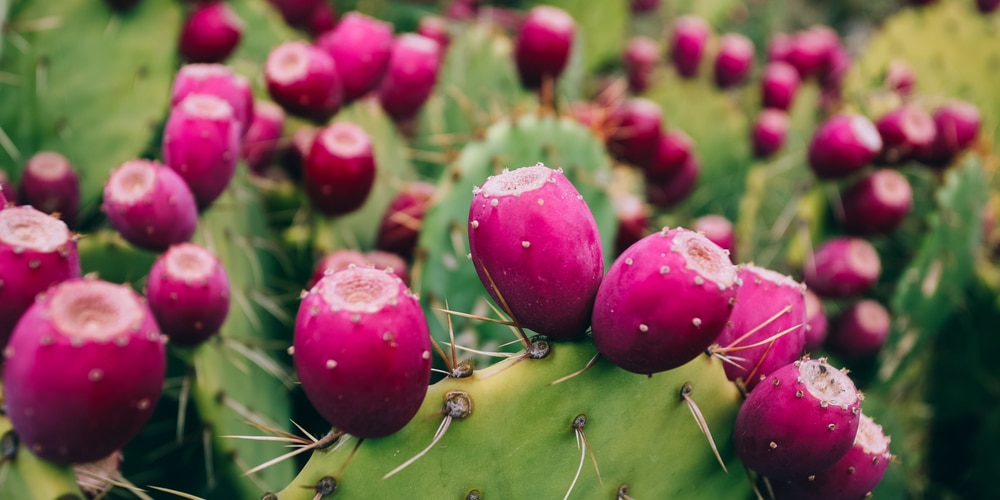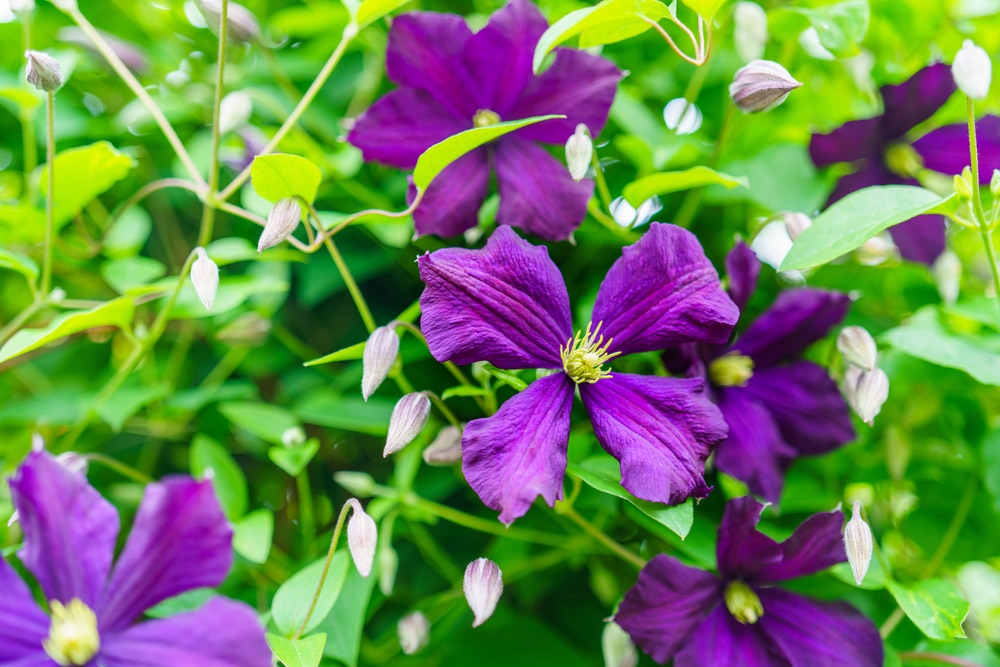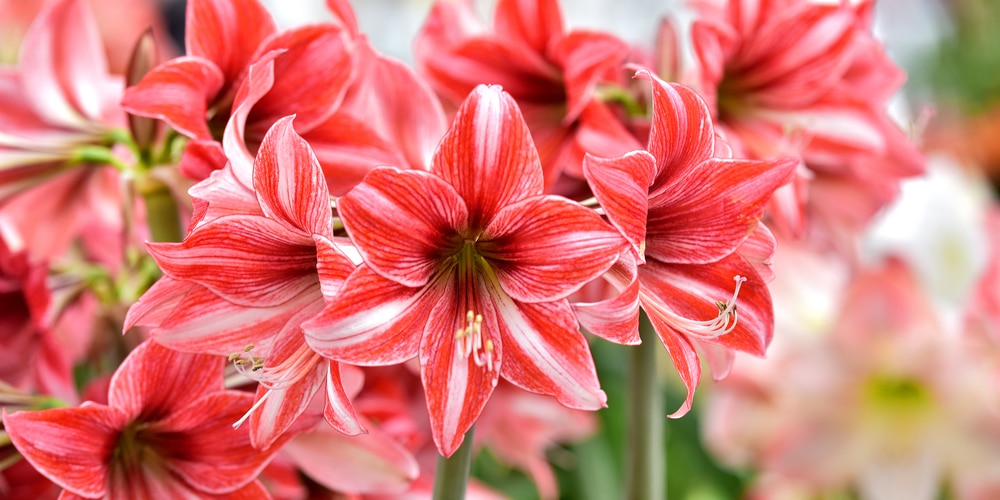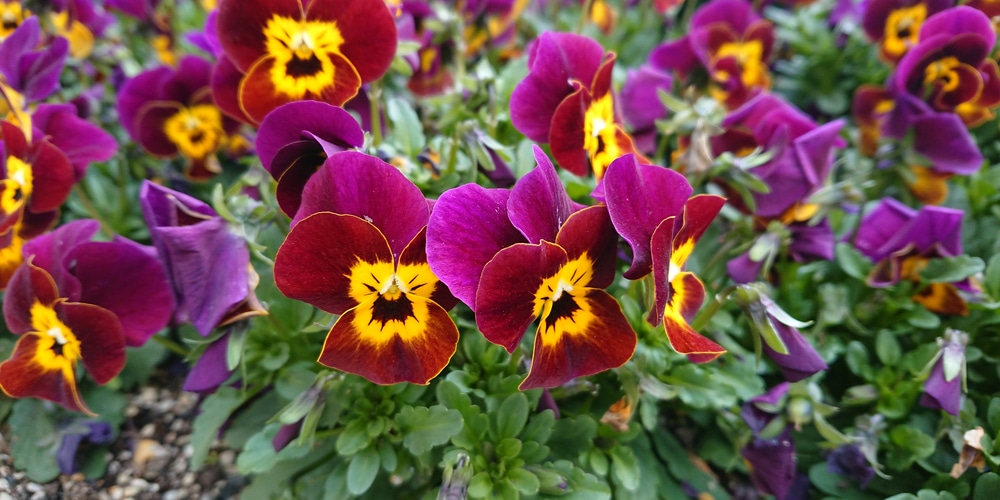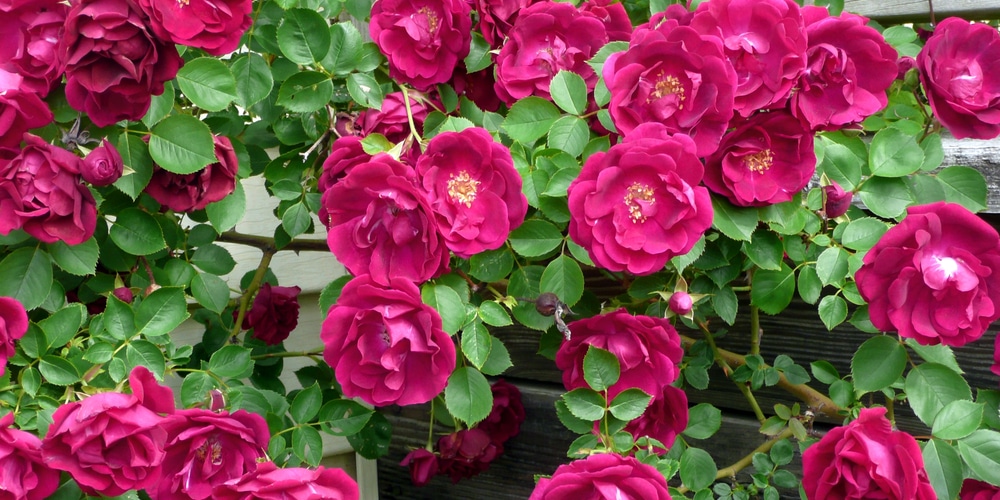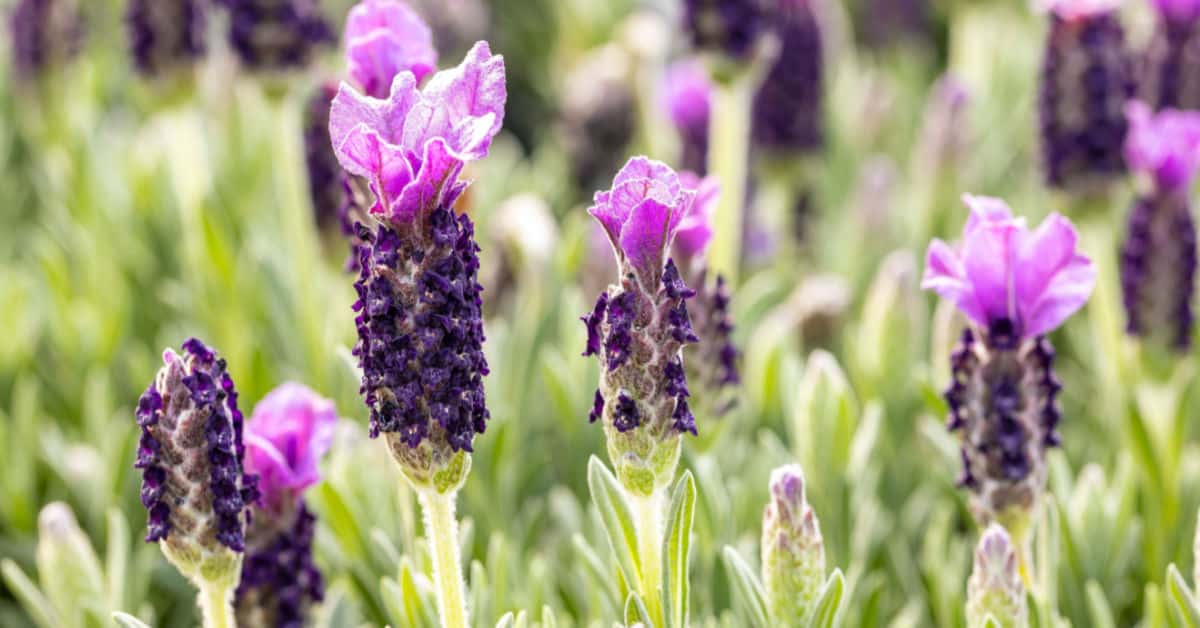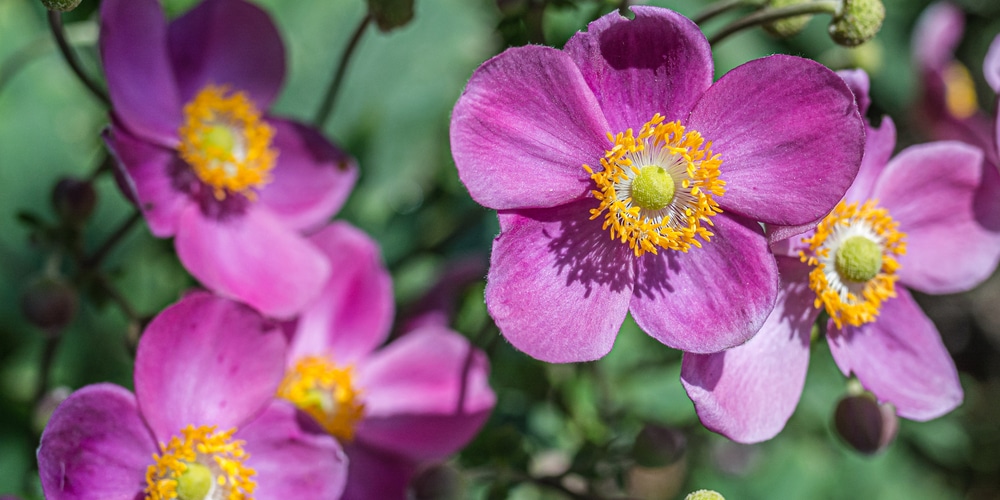If you’re looking to brighten up your yard or even the interior of your home with beautiful plant life that produces red and purple flowers, there are plenty of options. These plants range from those perfect for beginners to experienced horticulturists.
Cactuses
Plenty of cacti produce gorgeous bright red flowers, including the prickly pear cactus, the ball cactus, and the pincushion cactus. All these are simply common names for many different species of cacti that fall under those umbrellas. These three types of cacti need water only about once or twice a month, and they love the full sunlight.
Clematis
This climbing plant that sports gorgeous purple blooms in a range of shades, all the way from lavender to deep royal indigo. If you use a pot to plant clematis, it should be a large pot, as these plants like to climb and spread. If you plant them in the ground, you can give them somewhere to climb and spread by placing a trellis nearby or even planting them close to a wall. Clematis enjoys partial shade, and their roots need to be kept moist and cool.
Amaryllis
The Amaryllis is the perfect indoor plant for those with minimal experience or time to care for potted plants. They grow from a bulb and enjoy being pot-bound, so to speak, so they’re perfect for your indoor garden. These plants like indirect light and moderate temperatures and don’t need much water (only about a quarter cup of water each week). They’re famous for their huge red blooms.
Pansies
These cheerful little flowers come in a wide range of colors all over the rainbow, including red and purple. Pansies can bloom all year, and in fact, they thrive in cooler months. Many gardeners plant pansies in anticipation of a riot of color blooming in their gardens in the fall and winter. However, you will need to replant pansies each year, as they are annuals. This means that they complete their growing cycle during one season, and then they die, unlike perennials, which go dormant and return the following growing season.
Roses
Although roses are notoriously difficult to cultivate, they do come in a range of rich reds and pale to dark purples. Purple rose blooms have been achieved through meticulous crossbreeding, usually using white rose plants and red or pink ones to achieve the desired color outcome.
You can start your own rose collection by planting a rose bush in an area of your yard that has good drainage and plenty of sunlight. If rose bushes sit in excess water too long, they can drown, so you need to ensure they receive the proper amount of water. Rose bushes grow best in temperate climates, like northern California, England, and parts of the Mediterranean.
Lavender
The name originates from its color as it’s well-known for its lovely purple coloration. Lavender plants do well, whether in a pot indoors or in your garden.
They’re perennials, so you can continue to enjoy your lavender plants year after year. You can grow lavender pretty much anywhere, as long as it gets full sunlight and you plant it in well-draining soil. Contrary to what you may think, some plants do well in soil lacking high levels of nutrients, and lavender is one of them.
Anemones
These happy little flowers come in various colors, but their most popular color iterations are red and purple. There is nothing like a red anemone, except maybe a bouquet of them! These are perennials that thrive in temperate climates. They need moderately moist soil, and they do well in partial shade, but some species like full sun. It’s best to check what your cultivar of anemone prefers.
